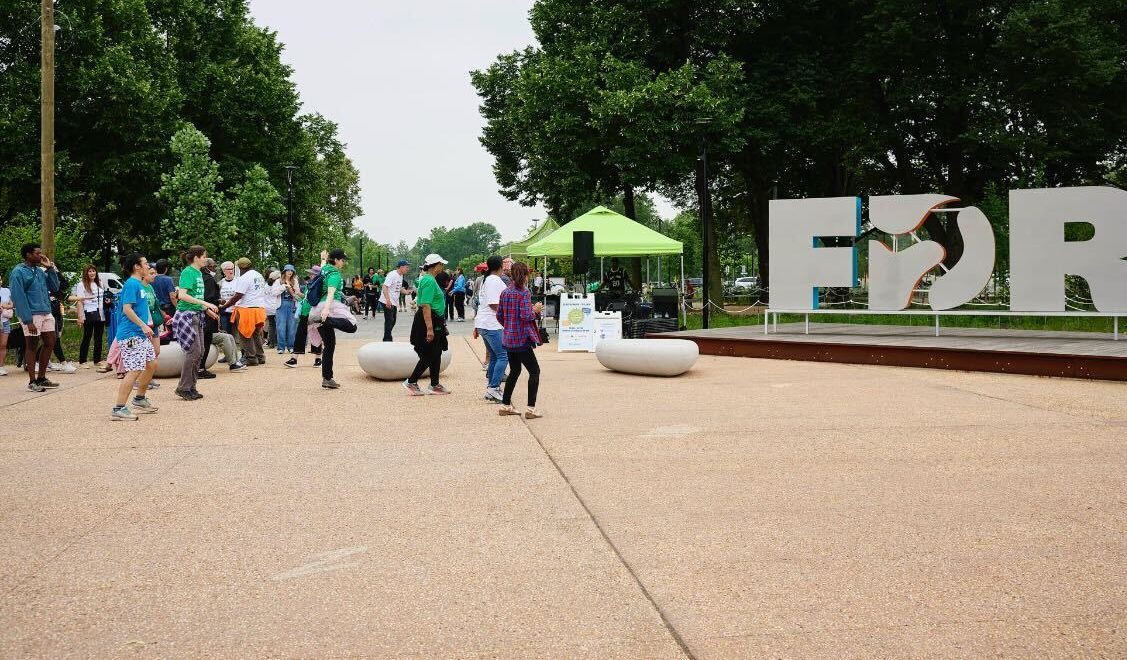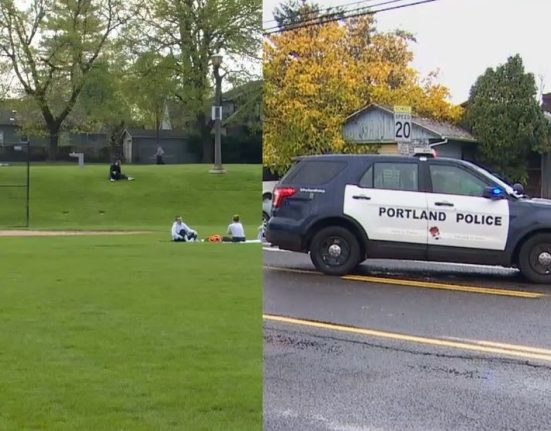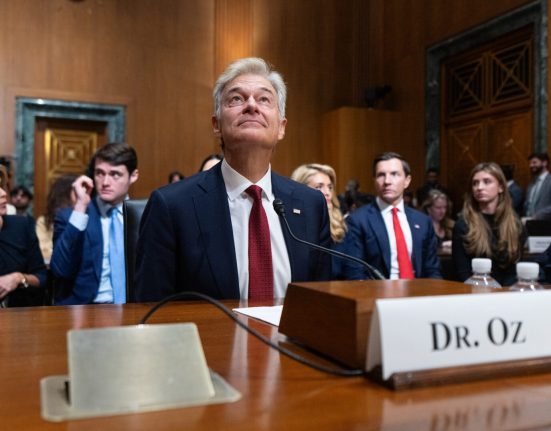FDR Park has been around since the Philadelphia World’s Fair in 1926, and some of its infrastructure dates back to that time. It was originally called Olmstead Park, for the landscape firm that designed it, and re-named after president Franklin Delano Roosevelt in 1955.
In the 21st century, the 348-acre park struggled with underfunding, flooding and deferred maintenance. It had not seen any significant improvements in many years.
Until now.
The Fairmount Park Conservancy unveiled the first of three phases meant to reimagine and reinvigorate the park, with community input — and about $250 million in funding from a variety of sources. Last month, it celebrated the grand opening for the Gateway Plaza, which includes the Anna C. Verna Playground and the $12 million Welcome Center.
Climate-informed planning
The effort was informed by the coming realities of climate change and included a comprehensive hydrology study. The trick for planners was to align community priorities with the reality of the hotter, wetter climate coming in the future — although, this summer, it feels as if the future is now.
“All of south Philadelphia stormwater drains in that direction,” said Tara Rasheed, senior director of capital projects at the Fairmount Park Conservancy, referring to FDR as well as West Fairmount and Cobbs Creek parks. “In 2019, we began looking at master planning opportunities in this park for a section of the city that is underserved in terms of public space and tree canopies.
“FDR Park is a real vital area for play and recreation, which all support public health in our communities.”
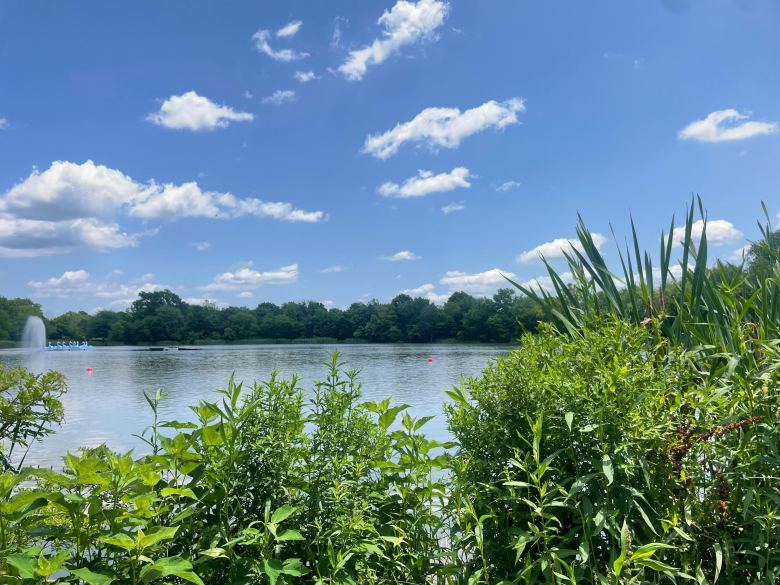
Many of the goals of the project centered around the balance of nature, water and recreational activities. In the end, the goal is to create a destination that combines ecology, recreation, art and design.
“We’re really excited now because the Gateway Phase is the first portion of the master plan completed,” Rasheed said.
With the Gateway Phase unveiled, the next two are:
- The Nature Phase, which will restore tidal wetlands, nature trails, wildflower hills, treehouse woods and a nature playground. Work on this started in 2023 and should be completed in 2026.
- The Picnic and Play Phase, which should be completed next year, as well. This will include a fieldhouse, basketball and tennis courts, fields, and a picnic plaza.
The work is complex. One aim of the project is to restore the natural wetlands while being thoughtful as to how to maintain and build higher ground to lessen flooding, and create shaded space for hotter weather.
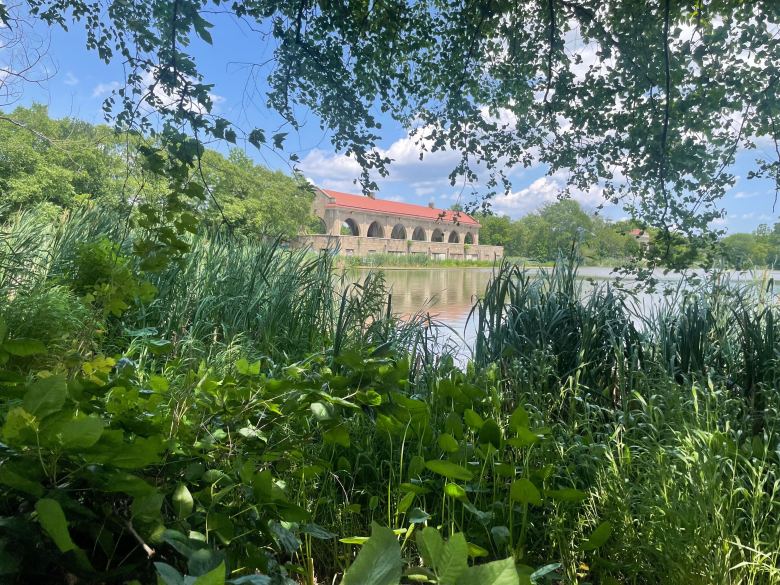
Positive signs
There are promising developments already. During the initial work, wildlife increased in the area that was being redesigned. In 2022, a decision was made to remove a proposed golf course and set aside an additional 100 acres for nature.
“This work is really special. There is no wetland of this size anywhere on the Eastern Seaboard and it has been a really wonderful opportunity to attract more native life,” Rasheed said.
There have been challenges. Due to a privatized golf course in the area, there was pesticide runoff. Invasive species had moved in to some areas of the park that were unmaintained for nearly a century. The project took the opportunity to restore forest wetlands and fight off the invasive and non-native species in the area.
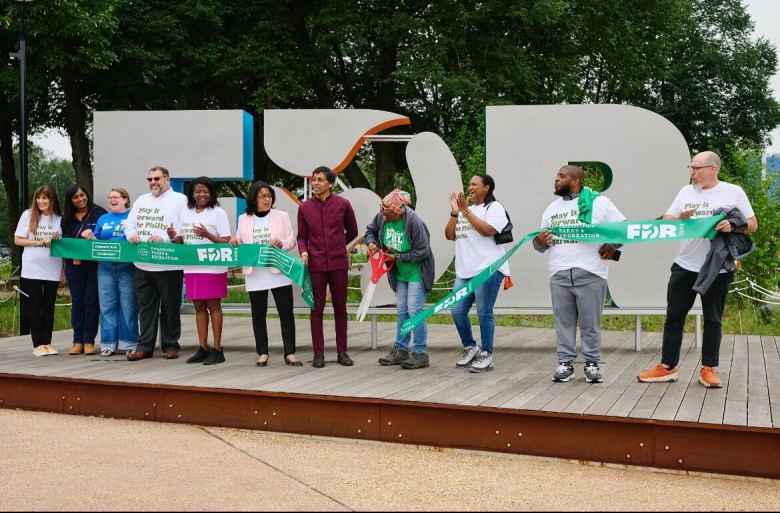
The project is ambitious and received broad support. Portions of the roughly $250 million needed to execute the plan has come from Philadelphia Parks & Recreation, state and federal funding, and the philanthropic support of the William Penn Foundation. Even the Philadelphia International Airport, which itself sits on a wetland, pledged about $30 million to support the plan.
“I think it’s been a really great opportunity to combine a lot of needs for positive, overarching goals for public space, not only in the neighborhood,” Rasheed said. “The size and quality of this park makes it a city destination, especially with the increasing heat waves and impacts on climate. FDR Park is the first of its kind that is climate-focused and sustainability-focused.”
And there is a deadline on this kind of work, she added.
“If we don’t change the hydrology of the 350 acres, the city at large is at risk of losing this open public space with these really special and interesting habitats,” Rasheed said.
Public input played huge role
On a recent visit with Billy Penn, Ausra Mussett, the planning and engagement project manager, laid out blueprints for the project on a carpet to show some of the details.
Accessibility was a priority, so the park was connected to the Broad Street Line, so those without cars could get there.
A lot of detail went into restoring the area’s biodiversity, too.
“The Gateway Plaza introduces somewhere between 30,000 plugs, native perennials, native grasses in what was just monoculture. It was grass and all the same species of trees,” Mussett said.
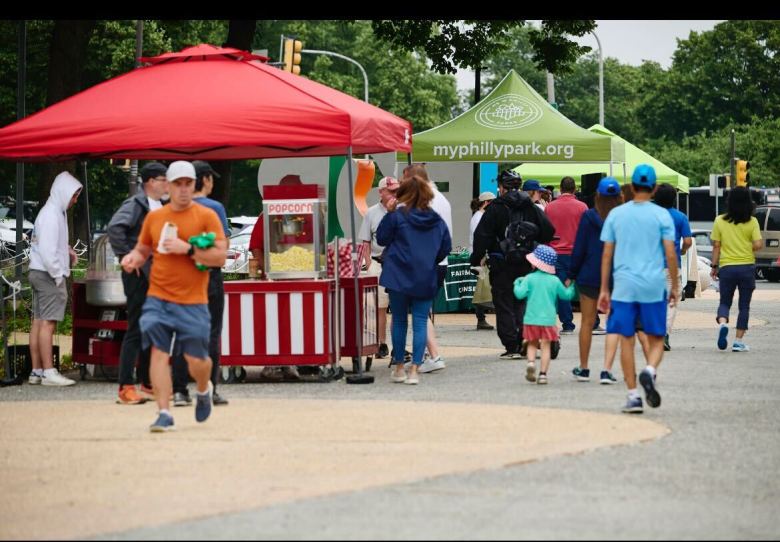
And upgrades were made to increase visitors’ comfort.
“We have misters at the plaza for cooling,” Mussett said. “And as our summers get hotter, making the space climate-resilient, adding benches and custom seating” was important.
The planning was not done in a vacuum: more than 3,000 people participated in the input process. The team conducted surveys and workshops, and engaged with community members in multiple languages to gather feedback.
Questions asked included:
- “What is missing in these spaces?”
- “What would encourage you to come more to the park?”
- “What activities do you need to see here in order to make this serve?”
Planners said the feedback provided essential “building blocks” for the project, including:
- Bathrooms
- High-quality play space
- Food concessions
- Seating
- Lighting
‘I can’t stop coming by’
Construction on the upgrades hasn’t been all smooth sailing, however. Renovations caused unforeseen flooding of the park’s lakes in 2023 and some neighbors and community groups objected to the changes made to the former golf course area — popularly dubbed “the meadows.”
For a while, during construction, messages were scrawled on bridges, benches and rails along the park’s trails, reading like breadcrumbs of opposition to the project. “Save the Meadows” was a frequent refrain.
Now, though, Philly native Jose Garcia said he visits the park with daughters Michelle and Esme every Saturday and Tuesday.
“It’s a fun time for everyone,” he said. “I grew up coming here, so [I enjoy] bringing them here as the space finally gets the remodeling it deserves. My girls got so excited to see the park come alive. It’s nice to have a break from stress and just enjoy nature and watch the birds … They have good spaces to cool off in the shade, which is great, too.”
Another family, Jasmine Rivera and her daughter Sianni, enjoy the flowers and swings.
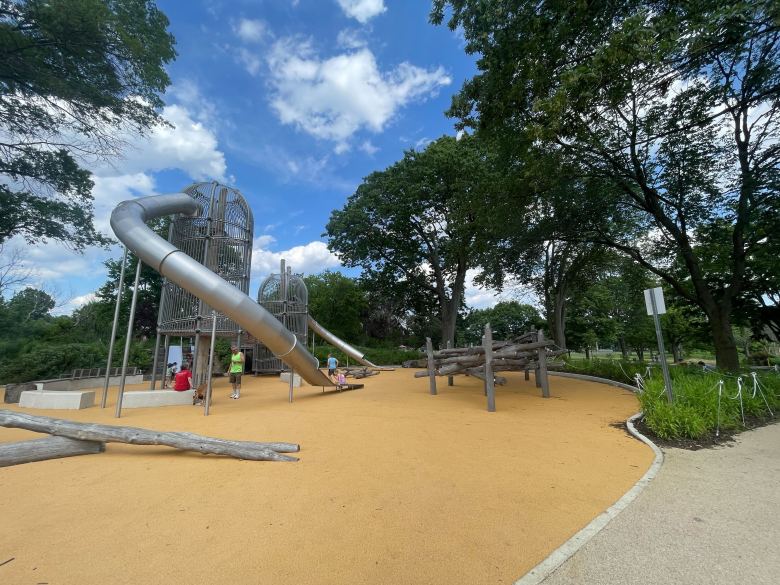
“I started coming here recently when I learned about the Gateway Plaza opening. I didn’t know we had this park in the South Philly area, but I can’t stop coming by now,” Jasmine Rivera said. “My daughter loves the swings and I love feeling the breeze coming from the lake.”
Minho and Ara Lee, of Philadelphia, have enjoyed seeing the changes as well.
“I’ve been bringing my wife here for a very long time. We came to the neighborhood from Korea in the late ‘60s and have been here ever since,” said Minho Lee. “We’ve always loved this park.
“My wife and I love to watch the birds. We come to the Saturday food markets — best food by far. As it got hotter and unmaintained, I hadn’t seen a variety of birds come by. Now that there’s different plants around, you can see the birds came back.”
Taking the project from planning to seeing people in the space brings satisfaction to the project team.
“It’s transformational, it goes beyond updating and improving it and refreshing it. It’s a once-in-a-generation investment,” Mussett said.
FYI
FDR Park is open every day from 6 a.m. to 9 p.m. through October. The park hosts public events on Tuesdays, Wednesdays and on the weekends through the summer. These include nature walks, paddle boating and Southeast Asian, African America and Latin American markets.

